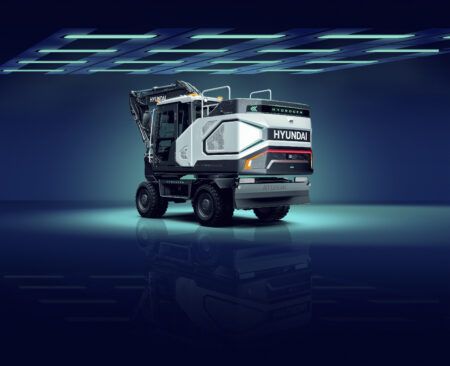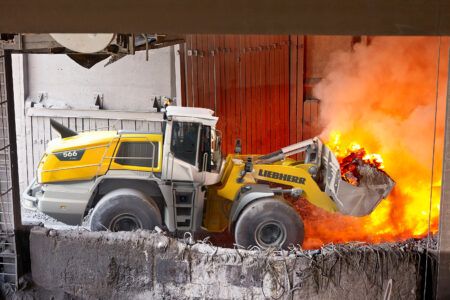The Nexat initially turns heads due to its unusual dimensions – it traverses fields longitudinally. But what’s really game-changing about this vehicle is its modular functionality, which makes it adaptable to all aspects of crop production, dispensing with the need for tractors in the field
***
The Nexat, which stands for Next Generation Agricultural Technology, is a new concept in crop production which rotates the dimensions of a traditional combine through 90 degrees, but does so much more, enabling farmers to sow, cultivate, fertilise, and harvest multiple crops with just one platform.
Having already placed as a Gold Medal Award Winner in the Agritechnica Innovation Awards in 2022’s virtual Agritechnica, its impressive debut on the global marketplace also garnered the Nexat an Agrifuture Concept Award in 2023. “It’s a holistic crop production machine, the first of its kind worldwide,” says Jens Willeke, marketing manager for Nexat.
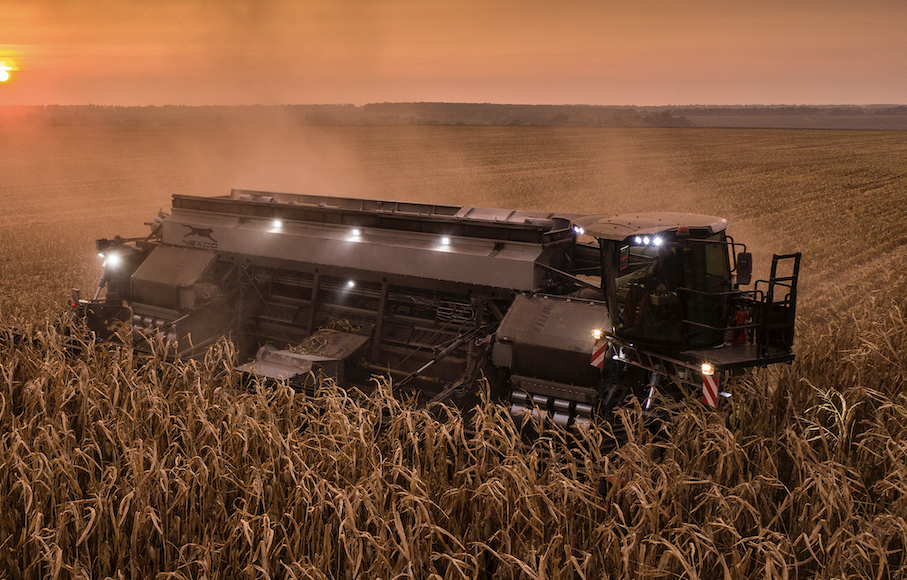
ABOVE: The Nexat traverses fields longitudinally, and due to its modular functionality is adaptable to all aspects of crop production, dispensing with the need for tractors in the field
Development of the Nexat began in 2012, with a second iteration announced in 2019. Serious production has now commenced on this next-generation, all-in-one agricultural solution, the exact components of which are entirely customisable. “It depends on your mission,” comments Willeke, adding, “We can manage 2000 to 2500ha with one Nexat system.” In practice, this means the combined power of (roughly) three tractors and two combines.
The Nexat essentially acts as a carrier vehicle, a chassis onto which various modules for soil cultivation, planting, plant protection, seeding, fertilisation, and even combine harvesting, can all be attached and controlled from. As Willeke points out, the idea stemmed from controlled traffic farming (CTF) systems. “We want to create a really widespread CTF system. The good distance between the wheels gives you enough space to build up different implements,” he says.
In combine ‘Nexco’ mode the Nexat has an efficiency advantage over traditional combines due simply to its unique geometry. Ordinarily a combine rotor is lengthwise to the driving direction, meaning the crop flow has to be rotated, expending energy. “The nice thing about Nexat is the crop flow is going along the driving direction, and the rotor is crosswise, so the crop flow is in effect already rotated,” says Willeke. “This means straw can be left longer because you get smooth turning and smooth threshing. It’s really unique.”
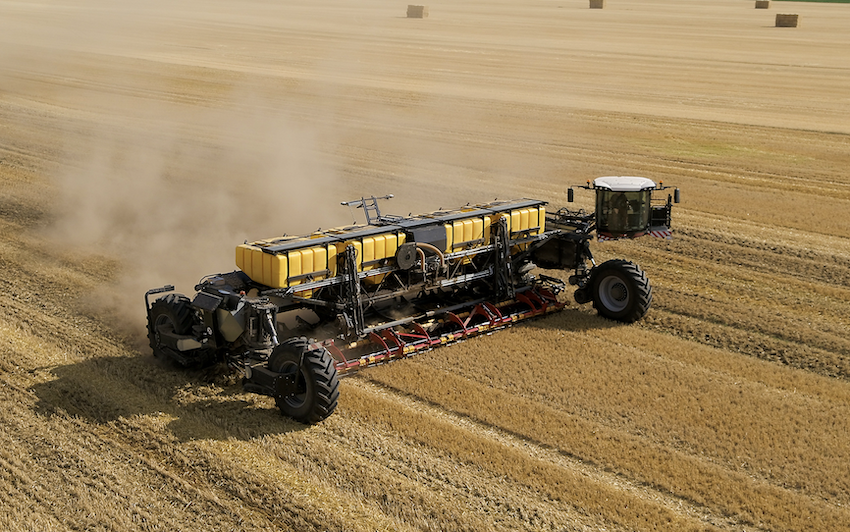
ABOVE: When in ‘Nexco’ or combine mode, the Nexat has an efficiency advantage over traditional combines due simply to its unique geometry
The entire system weighs 40% less than conventional methods while offering up to 50% more throughput thanks to this powerful, streamlined design.
None of this would be possible however without a pair of Liebherr diesel engines, which combine for a monstrous 1,100hp (809kW). These power a generator, which in turn powers four electric drives for the 45ft wide unit, each of which has an output of 160kW. The result is a higher quality yield, and energy-efficient crop cultivation with smooth turning and threshing.
Partnerships and plant protection
Joseph Jandrisch, cofounder of Nexat’s parent company, Kalverkamp Innovation, highlights the importance of Nexat’s CTF approach for overall efficiency, saying, “Through the use of CTF, only 5% of the field sees tracks, and significant saving of inputs can be achieved because the tramlines are not seeded or fertilised.”
Importantly, the modules can be swapped by one person in under 10 minutes, allaying fears about the interchangeable implements becoming a time-sink. Nexat says it is also looking to the future of fuel and has accounted for the potential use of green hydrogen fuel cells within its modular vehicle, though
no further information on the development cycle has yet been made available.
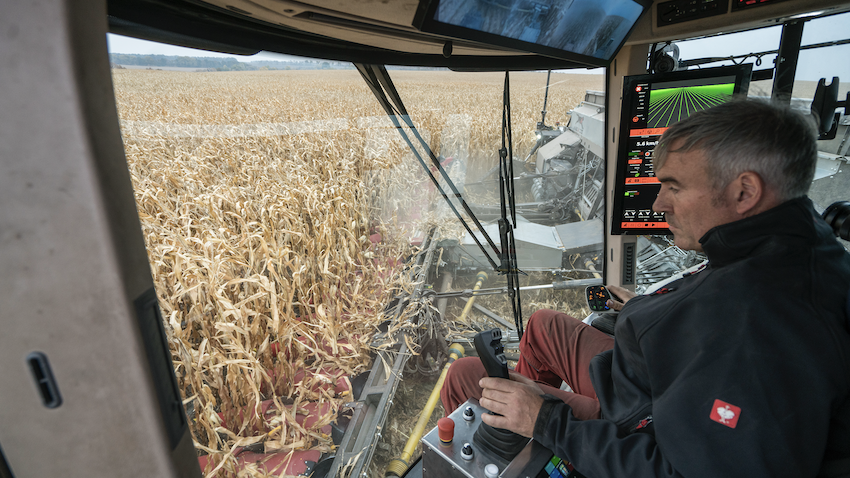
ABOVE: Nexat offers several very important boxes for modern farming operations including increased productivity per hectare and capita, greater profitability and more sustainable resource management
As evidence of the Nexat’s efficacy, 10 machines are already in commercial use, in a variety of locations worldwide, “We have three already in North America, one in Germany, two in Ukraine, three in Romania,” points out Willeke.
Though the exact price of the Nexat is as yet undisclosed, Jandrisch hints that it is significantly cheaper than conventional systems, which generally comprise upwards of US$4 million worth of equipment.
An important part of the development of Nexat has been its partnerships with manufacturing experts such as Väderstad, who developed the planter and seeding system, Herbert Dammann, responsible for constructing the spraying unit, and Geringhoff, providers of the draper header, all of which point to Nexat’s long-term strategic goals of providing accessible parts sourced from established manufacturers.
Crister Stark, part of Väderstad’s owner family, Innovation Manager at the company, and a gold medal recipient from the Royal Forest and Agricultural academy in Sweden for ‘outstanding work’ in soil cultivation and seed drilling, says of the partnership with Nexat: “For long-term, climate-neutral, resource-saving agriculture, a rethink must take place in harmony with nature, both in terms of agriculture and technology.”
Further, the recent announcement of investment from EW Group, an international family holding who will receive a minority stake as part of the transaction, has unlocked additional ‘long-term development opportunities,” according to Klemens Kalverkamp, managing director, Nexat.
A true turnkey solution
Where established parts were either unavailable or unfit for purpose, Nexat has readily demonstrated the capability to manufacture custom modules. Its 1,100hp combine harvester module, which can hold
up to 1,000 bushels in the grain tank and be emptied within a minute, was designed and built entirely in-house.
The Nexat certainly appears to tick off several very important boxes for modern farming operations: increased productivity per hectare and capita, greater profitability, more sustainable resource management, and the technical and economical implementation of multi-cropping.
The more sustainable a practice, the more profitable in the long term. As much is not lost on Nexat or its clients. Much of the conversation around its gantry-style solution ultimately centres around global issues in agriculture like soil compaction. Nexat’s own research has demonstrated massive reductions in permanent soil compaction; only 5% of the arable soil is compacted with Nexat’s system, whereas that jumps to 20% under CTF, and an alarming 70% under random traffic farming (RTF) conditions.
It is these ‘easy’ wins in sustainable practice which have the potential to revitalise the area of regenerative farming practices, readily address future soil management challenges, and enhance the biodiversity and long-term health of a range of different crops; all while reducing operating costs and enhancing their profitability.



